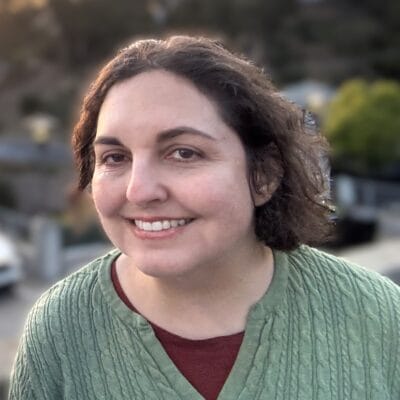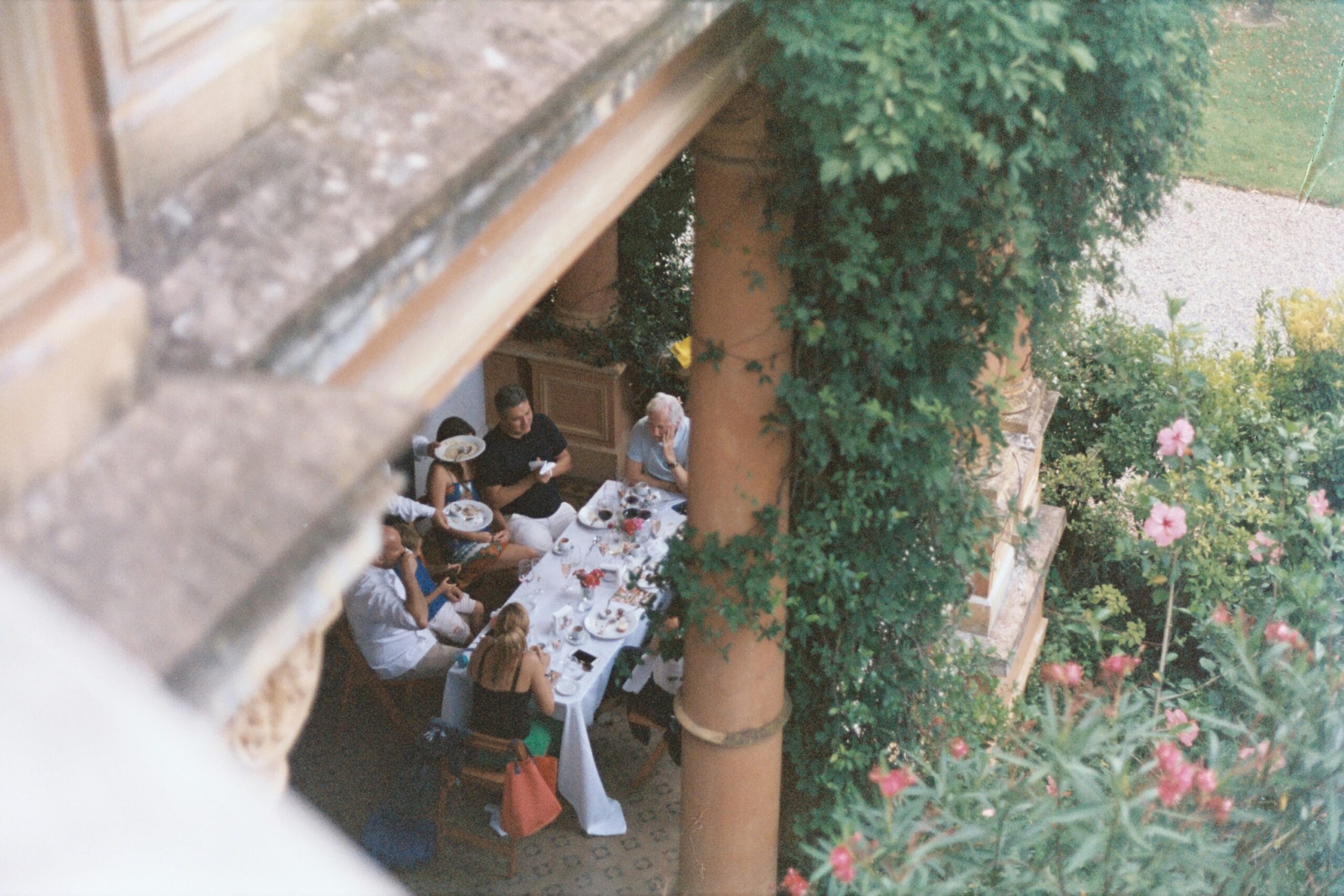A Life Unexpected but Unique
Rebecca’s plans for her future were unexpectedly derailed after experiencing a brain hemorrhage and stroke in middle school that left her with several invisible disabilities. However, thanks to an epilepsy support group and other opportunities for assistance, she continues to feel optimistic despite her challenges.

Story
It can be hard for people without “invisible disabilities” to understand the challenges that I face. Even I naively thought things would be fine back when I was a college student in my relatively small liberal arts “bubble.” I had an unexpected brain hemorrhage in middle school, and as a result, experienced some vision loss; I can detect a little bit of movement and some vague color, but other than that, my right side is like a dark curtain. It is why I rely on public transit and have never learned to drive. But I was doing well enough that I figured I’d have plenty of job opportunities after graduation. But life didn’t work out that way.
Now, many years later, I have a part-time position at the nonprofit Senior and Disability Action, and I have faced more than my fair share of frustrating situations – most recently, at a Trader Joe’s near my apartment in Oakland, not far from Lake Merritt.
 On that day, I was in line at Trader Joe’s, and there was a person on my right side. I didn’t see them at all, likely since it was after dark and the line was not moving. When the man in charge of checkout yelled at me for blocking a line, I realized that with my short-term memory loss, I had forgotten to bring my cane, so people could not tell that I was not able to see the people on that side. I apologized, and when I said directly to the people on my right, “I’m so sorry – I’m blind on my right side so I did not detect that you were there,” they said, “Oh, I understand.” But the person at the checkout was still angry, and as I tried to explain that I am blind on my right side, he looked at me almost in disbelief and motioned for me to move over to make space for others.
On that day, I was in line at Trader Joe’s, and there was a person on my right side. I didn’t see them at all, likely since it was after dark and the line was not moving. When the man in charge of checkout yelled at me for blocking a line, I realized that with my short-term memory loss, I had forgotten to bring my cane, so people could not tell that I was not able to see the people on that side. I apologized, and when I said directly to the people on my right, “I’m so sorry – I’m blind on my right side so I did not detect that you were there,” they said, “Oh, I understand.” But the person at the checkout was still angry, and as I tried to explain that I am blind on my right side, he looked at me almost in disbelief and motioned for me to move over to make space for others.
There was another experience I had recently, worse than that, at the airport in Raleigh, North Carolina, on the way back to California from my college reunion. I graduated from Guilford College, a Quaker school, which was very challenging, although it was more supportive than my high school of nearly 4,000 had been.
The airport had a different type of scanning than I have experienced at other airports, and since in addition to my vision, my right hand is still very weak due to being briefly paralyzed (although I am fortunately able to type, writing is a different story), they asked me to do an enhanced pat-down that throughout the process required me to stand on one leg, hold onto supports, and hold my arms out, and I apparently and unsurprisingly looked very different from everyone else going through security because my body can’t do those things.
I have found that both friendships and relationships beyond friendship can be challenging due to invisible disabilities.
I was soon taken aside by security personnel. Once I showed both my Medic Alert bracelet that I wear for epilepsy, as well as my Disability Discount card used for public transit in the Bay Area, I was allowed to pass through the gate after answering questions correctly about why I had not followed the instructions. But this shocked me, as I had not experienced it at San Francisco International Airport or other airports in the past.
In addition to this, I have found that both friendships and relationships beyond friendship can be challenging due to invisible disabilities. An epileptic friend who calls me her “seizure sister” agreed. In one case, after several dates with someone, I explained that in addition to physical and learning disabilities, I also have epilepsy that I take medication for and that I am followed by several doctors. This person said that the regular medical issues linked to disabilities were a little too much to deal with. In college, a relationship I was in ended soon after one of my then-rare and unexpected seizures.
Once many of my childhood friends were married with children, some people started to ask me – I can understand out of curiosity – why I didn’t have children. One of my friends, likely due to my invisible disabilities, even offered not long ago for me to move into her family’s residence to start a family of my own.
I tried to explain that, as much joy as children brought to me, I just didn’t think I’d be able to be a good parent because of my issues with memory loss and the fact that I often needed to rely on others as a result of them. I had not only challenges with multitasking at stores, but also remembering things for myself, including my medication list. For example, I always look forward to time spent with my elementary-school-aged niece. But I have noticed that when she is talking to me during family get-togethers, I cannot also focus on packing or doing something else at the same time – one challenge of ADD.
 I also explained that the only way I had been able to get through math at school was due to experienced family assistance in subjects up to Algebra 2, including help with the homework. And despite all of my efforts, a combination of math disability and memory loss led to my failure on nearly all exams.
I also explained that the only way I had been able to get through math at school was due to experienced family assistance in subjects up to Algebra 2, including help with the homework. And despite all of my efforts, a combination of math disability and memory loss led to my failure on nearly all exams.
So, as optimistic as I try to be, I realistically do not know how I would be able to help children to move on and succeed past an early elementary school level as others in my family are able to.
Despite the challenges – and other friends agree with me on this – I do try to be optimistic whenever possible. I did join an epilepsy support group led by someone who developed epilepsy after brain cancer around the same age that I developed it, and we both try to look at positive things that can, in their words, help to keep our “chins up.” That was especially challenging to me as an adolescent soon after the unexpected brain hemorrhage, when I had spent the previous year making almost As and then struggled to make Bs at school. But as an adult I know that there are new opportunities every day for assistance, for exercise (even if I can’t run, I enjoy other forms of exercise, like dance), and for things that I really CAN do.
About the contributor
Rebecca Muller lives with six invisible disabilities – short-term memory loss, epilepsy, math, ADD, partial hand paralysis, and visual field cut – as a result of a rare brain hemorrhage and subsequent stroke during adolescence. She attended an accommodating liberal arts college and earned a bachelor’s degree in sociology/anthropology with a concentration in Latin American Studies.